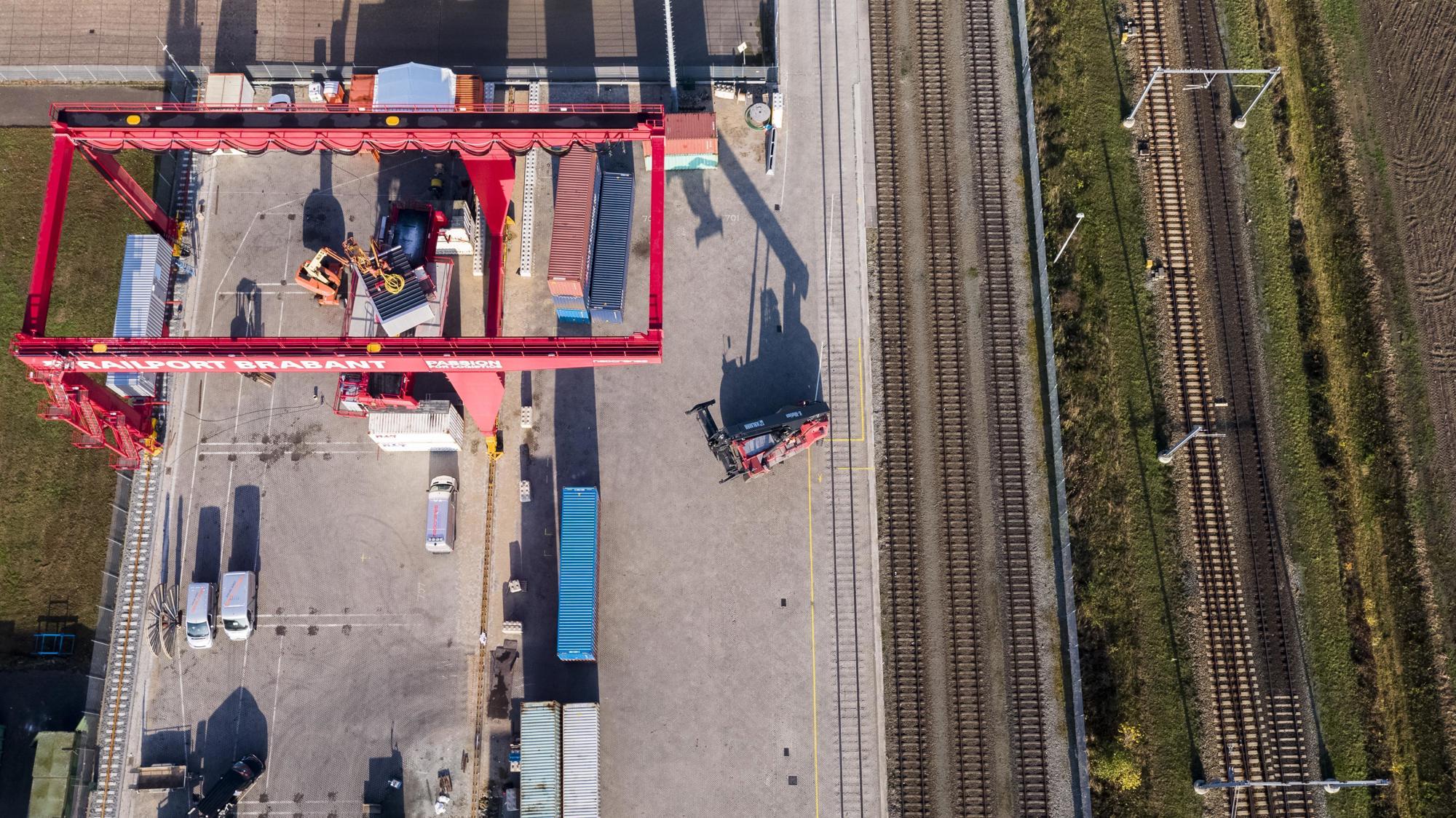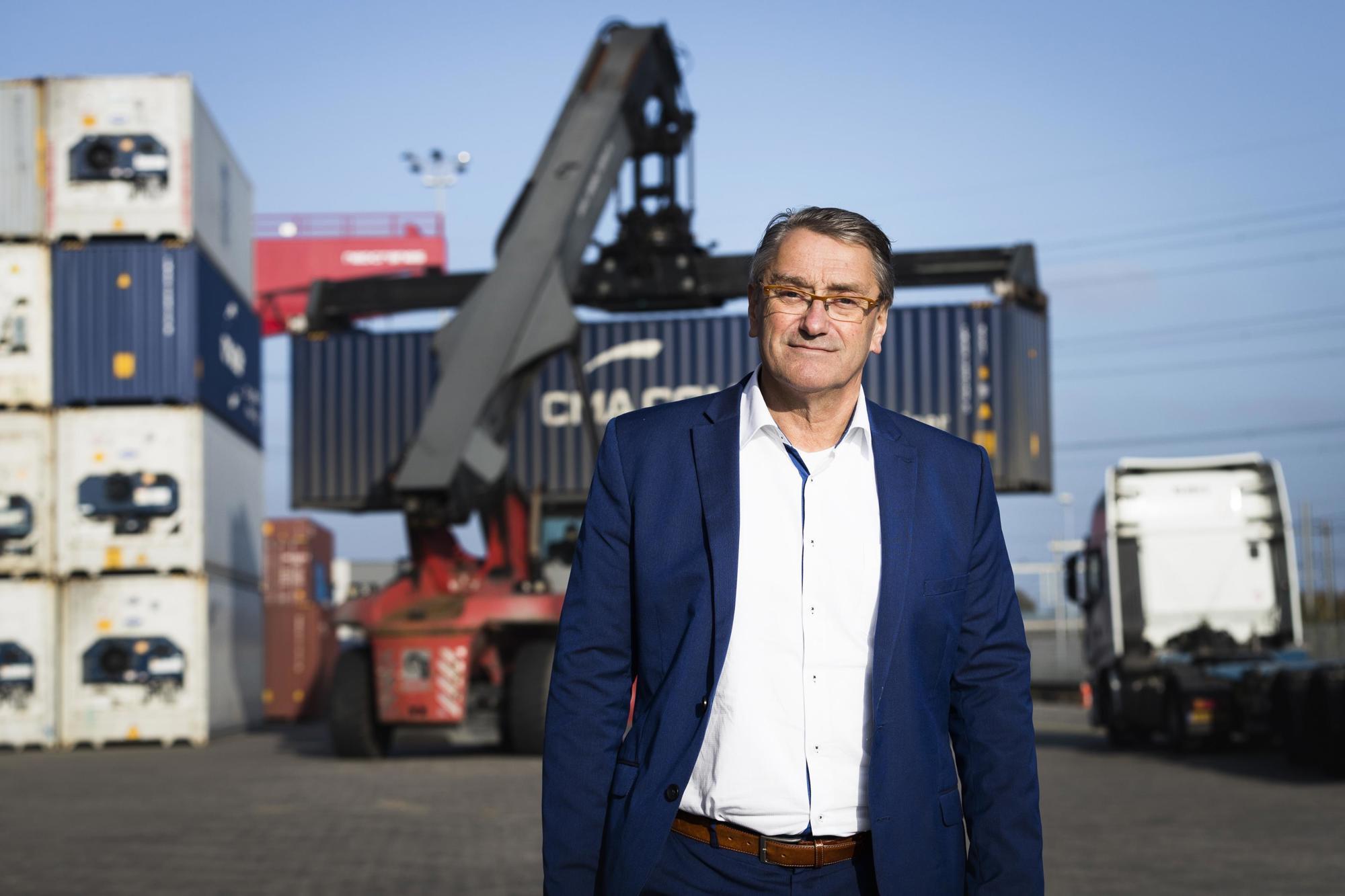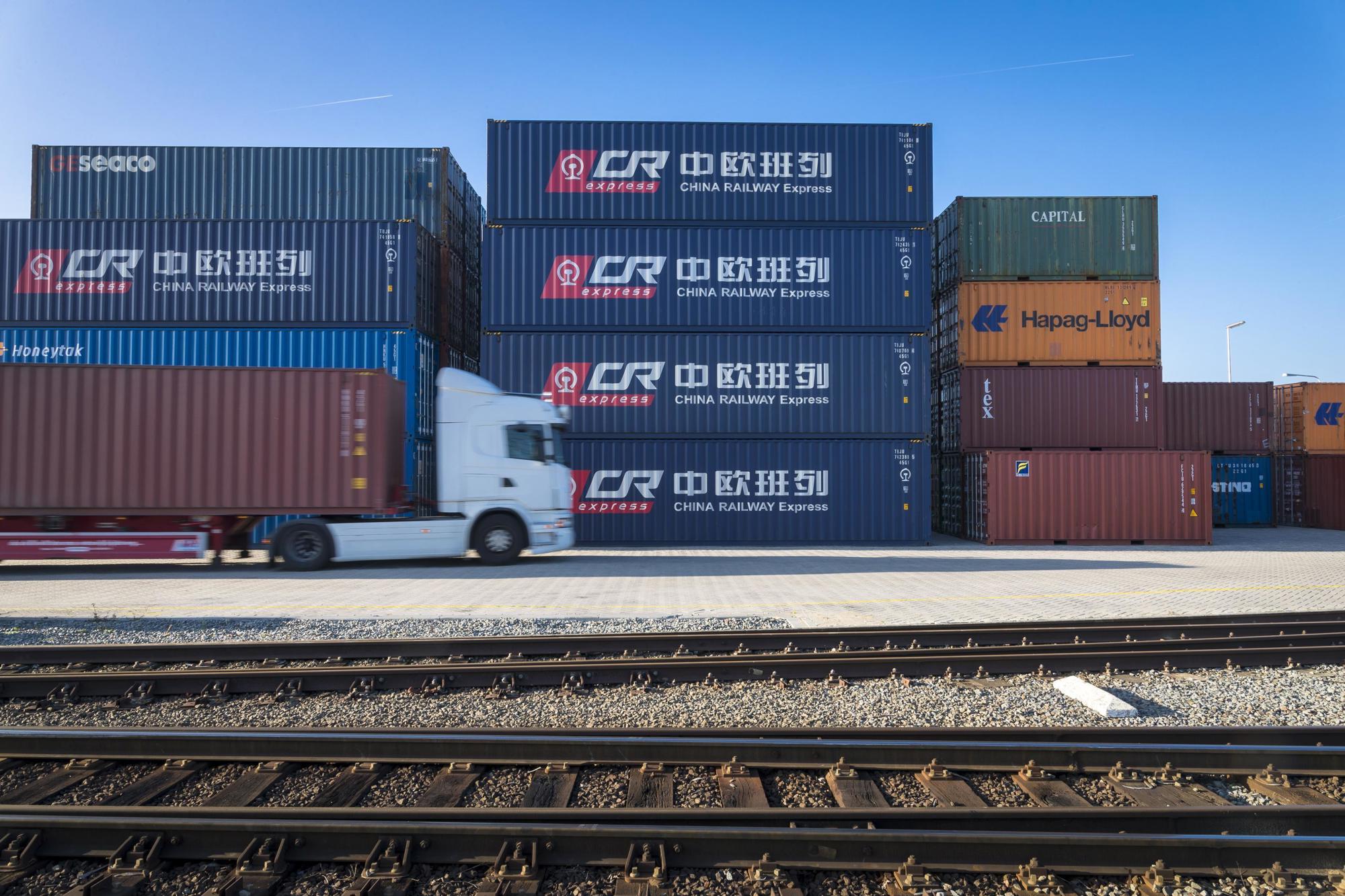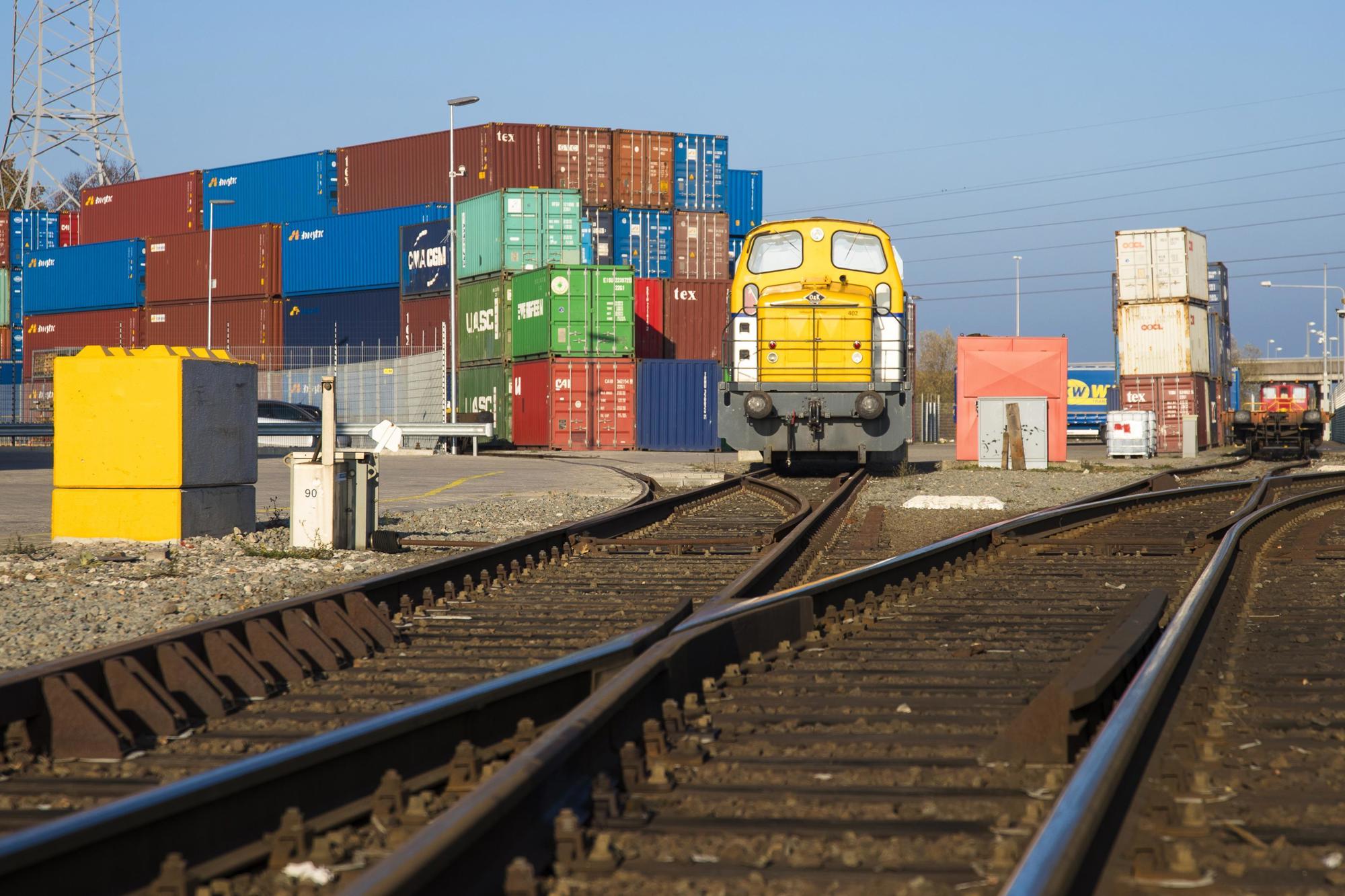GVT provides a direct connection between Tilburg and Chengdu in China via its own distribution network, warehouses, Barge Terminals and Rail Terminals.
Tilburg has become the leading logistics region of the Netherlands. Brabant-based GVT Group of Logistics is the unsung hero behind this development. The company has its own distribution network, warehouses, Barge Terminals and Rail Terminals. GVT uses all these assets to provide a direct connection between Tilburg and Chengdu in China, where it will soon open a Holland House. GVT is present on land, at sea and in the air.
Opening day in Chengdu. Beforehand, Roland Verbraak of GVT Group of Logistics thought that the opening would be a fairly modest affair; cutting a ribbon, shaking hands with some important officials, enjoying a meal together and then heading back home. How wrong he was. It was a great spectacle. With dozens of Chinese VIPs, government officials and other highly placed people. The modest delegation from the Netherlands felt rather overwhelmed. But that in no way lessened the grandeur of the occasion. “We were featured on state television, among all the other important events of the day. I think everyone in China knows where Tilburg is now. Just like Giethoorn.” Ever since Chinese state television broadcasted a documentary about the ‘Venice of the North’, Giethoorn has been inundated by an armada of Chinese visitors. Verbraak smiles: "We will be happy to welcome successive waves of a Chinese armada with open arms.”

Roland Verbraak is GVT's General Manager. He has been working in logistics for 33 years. Which is hardly surprising. He has been fascinated by (four-legged) horsepower (“that explains my bowed legs”) and wind speeds since the age of four. He learned how sail at the former marina in Tilburg - ‘De Zwaaikom’ - and still takes the helm on a regular basis. “We sail from Zeeland to London. And then go to Brick Lane for Chicken Vindaloo.” Verbraak seemed to have been born for a career in logistics. Even so, he decided in favour of the construction industry and studied Architecture at college. However, when he finished his course, the construction sector was going through one of the worst economic slumps ever. “Totally unimaginable today; the mortgage rate was 13%. I had to do something else.”
Even though he was still a student, he already had a job driving a truck. He was assigned to the delivery run from Tilburg to Roden for supermarket chain Albert Heijn. A school friend, Pieter-Jan Wassing, asked him whether he would be interested in a job with Wassing in Tilburg, a haulage company that would later become MOL Logistics. He will never forget the trips to North Africa. Twenty trucks full of computers and pesticides driving in a convoy down to Marseilles and then making the crossing to Algeria and Tunisia. Followed by one and a half weeks of waiting in the ports of Algiers and Tunis, with absolutely nothing to do. “I tried to leave the port wearing shorts on one occasion and was sent back immediately.” “Truck driving was completely different back then”, he says nostalgically. “You spent much more time with each other on the road - you were a team.”
He moved up through the ranks at Wassing, finally reaching the position of Operational Director. After a while, he felt ready for something different. Partly because of his wife’s ill-health - she suffers from severe asthma - he decided on a career change in 2009. He accepted a job with Koninklijk Drukkerij Em. de Jong in his home town of Baarle-Nassau. This company operates several rotary printing presses and has an annual capacity of more than 5 million newspapers and 15 million commercial products (leaflets, advertising), making it the largest printing works in the Benelux. From haulage to freight forwarding: “An opportunity to see things from the other side of the desk.”

Even so, powerful trucks and logistics continued to fascinate him. Not surprisingly, he moved to GVT for a major project after just one year. He was asked to set up a distribution network for Dell in the Benelux. He had known general manager Wil Versteijnen since the 1980s when they both worked in road haulage for Wassing. Wil Versteijnen drove as a subcontractor for Wassing and had already joined Versteijnen Transport, the family business that was founded in 1926. In 1957, one of the Versteijnen brothers decided to pursue a different commercial strategy, resulting in a split that was expressed by the colour of the trucks: one brother had blue trucks and the other brother had red trucks. The company with the red trucks later became GVT Group of Logistics. “If you want to work internationally, the original name - Gebroeders Versteijnen Transport - is a bit of a mouthful.”
GVT is active in much more than road transport alone. In 1998, the company opened the Barge Terminal Tilburg (BTT), an environmentally friendly and congestion-free method of shipping containers upriver from the port of Rotterdam to Tilburg first, and then transporting them to more distant destinations in Europe. “Rotterdam is a transhipment port with high storage costs. You can achieve significant cost savings if you immediately ship your containers by barge to the Tilburg barge terminal.” Other savings can be made in the area of detention and demurrage charges. Charges that you have to pay if you overrun the agreed unloading and submission times. Verbraak: “Besides container transport, we also offer various additional services at the terminal, such as customs activities, gas detection measurements and stripping or stuffing containers. To make handling here even more attractive.”

When the BTT opened, freight forwarders suddenly started to take an active interest in Tilburg. Just look at the map. Tilburg forms a triangle with the ports of Antwerp and Rotterdam. It is also located at a favourable node in the Rotterdam-Ruhr corridor. So the region had everything it needed to become the logistics hotspot of the Netherlands. Something that finally occurred in 2005 with the help of another GVT initiative: the company opened the Rail Terminal Tilburg - recently renamed Railport Brabant - in that year. The reason: the severe winter of 2003. The waterways were frozen for weeks at a time, meaning that ships lay idle at anchor in the harbours for much longer than usual. Obviously this was not good for business and the flow of goods. And the fact that the project for widening and deepening the Wilhelmina Canal, the connection between Tilburg and the Meuse, was delayed yet again also played a role. So, in the wake of transport by road and water, GVT was now also active in rail transport.
Things sometimes seem to fall into place. Because you start to see opportunities when you want to achieve something. For example, waste company Attero's train that transported household waste in containers from Tilburg to the incinerators in Moerdijk. The line was not used most of the time, so there was an opportunity to do more with it. Why not use it to transport other containers between the terminals in the port of Rotterdam and the inland port in Tilburg? Not only would this be more environmentally friendly, it would also reduce pressure on the road network. GVT only had to build one transhipment site to transfer from rail to road. And that GVT-owned and operated rail terminal was due to become even bigger in 2012, when the company acquired the neighbouring Friesland Campina site. The cheese factory was relocated along with the packaging activities. “A golden opportunity. Because the site lay directly alongside the track, with a branch line that gave us access to both the Dutch and international rail networks.”
Verbraak about GVT: “We transport more by rail and less by truck these days.” This shift reflects increasing congestion on the roads. Transporting goods by water is more carbon friendly. And driving a truck is losing its appeal as a profession. Trucking has become a race against the clock. And another important consideration: you can transport much more in one movement by rail. The same applies to transporting goods by water, he hastens to say. The government has now partially improved the Wilhelmina Canal. A 6 kilometre stretch in Tilburg has been widened and deepened. Two new locks will replace the old ones; one is ready, the second will come into service in 2022. This means that larger class IV vessels can also reach the terminal. “Ships of this size can transport as much cargo as 70 trucks. This obviously also relieves congestion in and around Tilburg.”
Let’s get back to the subject of rail transport. GVT has been transporting goods by train since 2004. Back and forth to Rotterdam six times a week. And the company runs a daily shuttle from Eindhoven and Tilburg to Rotterdam. By offering companies space to set down their containers, Railport Brabant acts an important front and back door for the port of Rotterdam. “We deliver them to any terminal required by customers, without any restrictions on the minimum number of containers to be delivered.” GVT also manages its own terminal in Rzepin in Poland, just across the border from Frankfurt an der Oder. “Electrification of the incoming track at the beginning of 2016 has really boosted Railport Brabant's development. Since then, international trains have been able to enter the terminal directly and no longer have to switch locomotives first. That used to be a very expensive last mile/first mile.”
And then, out of the blue, an unexpected phone call three years ago. A group of Chinese. Asking whether they could visit. Nothing unusual on the face of it, as GVT often welcomes foreign delegations. Verbraak had no idea where they were from, nor did he know what they wanted. But he found out a day later. “They were looking for a direct freight train connection to Europe.” And they had a plan. They wanted to set up a New Silk Road to and from China, which they intended to call ‘One Belt and One Road’. To boost their own economy and encourage collaboration with Eurasian countries. And that project would require major infrastructural revitalisation. Logical when you think about it. Towns and ports on China's coastline are booming, but the inland areas are struggling. So the government offers subsidies to encourage businesses to move factories to Chengdu and other inland cities. Also because the wages there are lower. A nice idea, but how will those inland factories transport their products to the ports so that they can be loaded on ships to Europe. Surely they would have to be transported a couple of thousand kilometres back to the coast. Not necessarily. Because a westward route from Chengdu opened up recently. And the train from that Chinese city now heads for Tilburg.
Three weeks after the visit (“Yes, we had time for some standard sightseeing as well: visits to Kinderdijk and De Efteling"), Verbraak received a phone call. They asked if we would like to come to Chengdu. Because they wanted to work with us. “To be honest, we were a little surprised.” The delegation from Chengdu also visited Rotterdam, but finally chose Tilburg. He can think of all kinds of reasons for this. Maybe they think Rotterdam is too big, too formal, too rigidly structured with too many rules? Verbraak: "We are a family business, and very flexible. We mainly focus on volume and priority, without disadvantaging others. When a train arrives from China, other less urgent projects are put on hold for a while.” Furthermore: “In China, all companies our state-owned. I believe that is why they prefer to work with family businesses. They were full of praise about the way in which we have expanded and organised our company.” Maybe the delegation saw signs of Confucianism, which is based on values like simplicity, thriftiness and taking good care of your people in exchange for their dedication and respect. Putting your own family first, something which is ingrained in Chinese ethics. “We welcomed them into the GVT family with open arms.”
So they boarded a plane to Chengdu, a crowded city with more than 10 million inhabitants. Believe it or not, it only took one and a half days to negotiate the agreement and put it on paper. “Tilburg is the first Dutch city with a direct train connection to the New Silk Road.” The train, consisting of 41 freight wagons, takes 15 days to travel the 10,947 kilometres between the two cities. It departs three times a week and returns three times a week. Due to different track gauges, the containers have to be transferred to different wagons twice during the journey. Even so, the journey by rail is an amazing 30 days faster than by sea - that alternative requires 45 days and is more than twice as expensive. The rail connection is only 8 days slower than airfreight, at just a quarter of the price.” Can he think of any other benefits? The excellent connection to other inland cities and areas in China and the Netherlands. Track & trace at all stages of the journey. And the people at GVT have even developed special containers for this long trip. Protected by a water jacket that keeps the contents at the right temperature, says Verbraak. “The temperature can drop far below freezing in Kazakhstan.”

He agrees: sending goods by rail is risky. A freight train cannot be sent on its way at random times. It has to be full. And trains run according to a fixed timetable. So, ideally, it should be fully loaded, for the journey out and the journey back. Running an almost empty freight train between Tilburg and Chengdu is expensive. However, the level of demand for return shipments from China is stupendous. He feels that the train is a good solution for factories that are late in delivering products that have already been publicised in a new collection and sales leaflets. “Trying to remedy the situation by sending products to the Netherlands by boat takes sixty days, and that is just too long. Airfreight is a possibility, but that is four times more expensive than sending them by train. So the train is a good option.” And handy when it comes to clothing and shoes. “The initial products are sent by train. The subsequent high-volume delivery comes by boat. Small repeat orders are sent by train again.” The train still has some excess capacity on the eastward leg. “We transport flight simulators, raw materials, and even complete factories. And above all expensive lifestyle products. Bentley, Land Rover, Maybach and other luxury car brands. A lot of wine and beer as well. As the Chinese middle class grows increasingly wealthy, the level of demand for Western products will automatically grow.”
Let us look at a few figures. Railport Brabant is booming. The annual container transhipment activity amounts to a theoretical throughput of 100,000 twenty-foot equivalent units (TEUs). They like to do things on a grander scale in Tilburg. Each train brings in several forty-foot containers (12.2 x 2.4 x 2.5 m). A total of 35,000 each year. If you lined them all up one behind the other, you would soon reach Paris. Verbraak realizes that the figures are still quite modest when compared to container terminals that focus on shipping. For example, GVT's own BTT handles 230,000 TEUs a year. But make no mistake. In a few years’ time, Tilburg will be one of the largest railports in Europe. Rubbing shoulders with Duisburg, Hamburg and Lodz in Poland. That makes him feel proud, particularly the train connection with China. The government also welcomes the line. Dutch Prime Minister Mark Rutte was present when GVT and Chengdu International Railway Port renewed their collaboration agreement during the last trade mission to China. “That had a huge impact there.”
Rotterdam and Central Brabant have decided to cooperate even more intensively. Under the name of Gateway Rotterdam Mid-Brabant. Which explains why Chengdu-Tilburg-Rotterdam Express recently started to appear on the side of the train. Verbraak: "Rotterdam was also considering a direct connection with China. Based on the example of Duisburg in Germany, an inland port that has been connected to China by multiple tracks for years. Why reinvent the wheel yourself when people have already done so just 50 kilometres away.” When you take a tour through Tilburg, you can see these positive developments at first hand. Everywhere you look, there are huge warehouses and assembly plants, XXL distribution centres with the names of major international brands on their façades (Tesla, Fuji, Coca Cola, Dell, Sony, Apple, LG, Iris Ohyama). The signs are visible everywhere. And it’s fair to say that GVT is the main powerhouse behind these developments. And nobody is pausing for breath. At GVT, they are already looking at new game-changers, on land, at sea and in the air. The company even announced a world-first recently: GVT will operate electric barges to and from the port of Rotterdam. Two giants of the inland waterways, measuring 110 metres in length, with a beam of 11.4 metres. You can stack 270 containers five-high on the deck. Four large batteries, housed in equally large containers, power the vessel and are good for 35 hours of sailing. “When you arrive, you can either swap the battery containers or charge the batteries, which takes four hours. The cargo area is eight percent larger than that of comparable vessels.” Five smaller barges (52 metres long and 6.7 metres wide, with a maximum cargo capacity of 425 tonnes) operate between the De Kempen container terminal in Budel and the port of Antwerp. “The five electric barges eliminate 23,000 truck movements.”
At GVT, they are also thinking about setting up a drone platform. The idea is to use the roofs of two 30-metre high warehouses in Tilburg, offering a total area of 110,000 square metres, as a facility for storing and distributing goods that arrive via the rail link between Chengdu and Railport Brabant. Perhaps those goods may soon include products from the major metropolis of Changsha, which is located slightly further inland in China. “This freight train connection has a larger capacity; fifty containers. It also takes a different route, via Manzhouli into the far north of China towards Russia.” And who knows what other train connections may be set up. "It seems as if all roads lead to and from China.”
But let us talk about the connection to Chengdu first. Verbraak: “Dutch companies are not sufficiently familiar with the Chinese market, and the opposite also applies. This is mainly a language problem. Which is why we are investing the money required to build a kind of Holland House in Chengdu, covering 1,500 square metres.” Dutch companies that are looking for an importer will be able to showcase their products there. “We will look for the importers and handle documentation.” However, the rail link is not just for large companies. “If you want to send a single pallet of goods to China, you can. Handy for start-ups. I would like to see more Dutch companies venturing into China. Because we enjoy connecting the two cultures and economies. And, obviously, that eastward bound train needs to be full.”
You can copy the full text of this story for free at the touch of a button